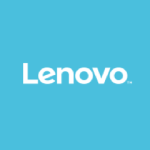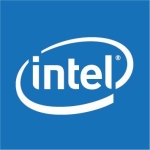Our Dell PowerEdge servers support a variety of workloads. We use them to host web servers, run internal applications, and manage virtual machines through VMware. Additionally, we utilize them for database storage.
The success of our entire business hinges on the reliability of our servers. Therefore, we require servers that meet our specific needs and minimize the risk of downtime. For this reason, we have chosen Dell PowerEdge servers.
We've automated the configuration process for our server racks. This allows us to easily and automatically apply the necessary settings during server installation. As a result, we can efficiently deploy multiple servers up to a dozen at once, and bring them up to standard quickly.
In terms of security, we primarily rely on firmware updates obtained from the Dell website. These updates are certified and considered reliable. However, we don't utilize many other security measures beyond this.
Regarding energy consumption, we haven't encountered any significant issues. The newer versions of the servers are demonstrably more energy-efficient than the older ones. We actively monitor and collect power consumption data to optimize power distribution across our server bays. The data from the PowerEdge servers helps us prevent overloaded bays and maintain balanced power distribution across the data center. Additionally, the server chassis allows us to effectively measure and distribute the load equally.
Unplanned production downtime has been significantly reduced thanks to the implementation of PowerEdge servers, particularly their robust monitoring capabilities. This allows us to receive comprehensive feedback on various aspects, including disk errors. Consequently, we can leverage the iDRAC feature to seamlessly switch to secondary servers in case of an issue, minimizing downtime. Additionally, the excellent support ensures timely replacements for any faulty disks, further minimizing disruptions. While disk failures may occur, the implemented solution effectively mitigates their impact on production.
We have only recently begun using the OpenManage console to centrally manage firmware patching and deployment across our chassis. This has significantly accelerated the update process. Previously, updates were cumbersome and often neglected. However, with the console, particularly in the data center where it is installed, patching is now much faster and allows for more frequent updates.
Our scalability is currently good. We can easily add more servers as needed, so there are no concerns at that level.
Nowadays, we adopt a scalable approach to server deployment. This allows us to dynamically select the necessary hardware components, such as CPU and RAM, based on evolving needs. As our requirements grow, we can seamlessly add new servers to the existing infrastructure, similar to how video chains are extended. This flexibility ensures that we only allocate resources when required, optimizing costs and efficiency.
Regarding Dell's support, we haven't needed it much recently, which is a positive sign. We haven't had many issues with them in the past either. While there were some challenges in the past, they were mainly related to the support tools, which could become complex when dealing with multiple deliveries.
Specifically, the issue arose from the tool's organization. We encountered situations where eight different sites with the same delivery address were created due to an extra comma in the address. This made it difficult to configure the tools as they recognized each address with the extra comma as a separate location.
However, since we've consolidated our data centers and everything is now at a single location, these issues have been resolved. The complexity arose primarily during my initial onboarding when we had servers duplicated across four sites, making management cumbersome.
That being said, Dell's support itself was always helpful. The challenges stemmed more from the limitations of the tool, which didn't allow us to permanently remove these "ghost locations" and required workarounds like hiding them within the interface.
Overall, although there were initial hurdles due to the tool's limitations, Dell's support has been satisfactory.
We use HP servers in parallel to the Dell PowerEdge servers. We are already using several HP servers in production. However, we haven't conducted extensive testing on them. Occasionally, urgent needs may necessitate their use. For instance, we acquired our current HP servers during a period of tight supply when we needed a two-week delivery timeframe, while typical lead times were around two months. As a result, the supplier had HP stock readily available, which is why we chose them at that time. While each technology has its advantages and disadvantages, we are very satisfied with Dell's performance. Since we haven't encountered any significant issues with Dell, they remain our primary choice for the time being.
During the initial setup, especially for the iDRAC configuration, I created custom scripts to automate configurations for iDRAC, BIOS, and Syslog. This streamlining process allows for a quick server installation. Once placed in the bay and prepared, our team can efficiently install the operating system and other necessary components.
In terms of our deployment strategy, we configure everything directly on-site. This includes setting the IP address for the iDRAC based on its final location. I then deploy the system using a pre-defined password and run a script that configures the base settings. Following this, the NG systems, including both Linux and Windows, take over to install the operating system.
Regarding the pricing, it seems fair. However, it's worth noting that compared to some brands, it can be more expensive, particularly in terms of customization options. For example, with Dell, choices like the GPU might be limited, potentially driving up the cost compared to a smaller server from another manufacturer like Supermicro.
As project managers, we should explore alternative vendors that offer greater flexibility in hardware selection and potentially smaller form factors. However, no final decision has been made on this yet.
I would rate Dell PowerEdge Rack Servers nine out of ten.
Foreign Language:(French)
Les Serveurs sont Éco-Énergétiques, N’Ont Pas D'Arrêts De Production Imprévus Et Sont Scalables
Quel est notre cas d’utilisation principal?
Les serveurs PowerEdge répondent à plusieurs charges de travail. Nous nous en servons pour l'hébergement des serveurs web, exécuter des applications internes et gérer les machines virtuelles à travers le VMware. On s’en sert aussi pour du stockage de base de données.
Le succès de toute notre activité repose sur la fiabilité de nos serveurs. Nous avons donc besoin de serveurs qui répondent à nos besoins spécifiques et qui réduisent le risque de temps d'arrêt. C’est pour cette raison que nous avons choisi les serveurs Dell PowerEdge.
Comment cela a pu aider notre organisation?
Nous avons automatisé le processus de configuration de nos racks de serveurs. Cela nous permet d’appliquer les paramètres nécessaires durant l’installation des serveurs plus facilement et automatiquement. On peut ainsi déployer efficacement plusieurs serveurs et même jusqu'à une douzaine en même temps et les mettre rapidement aux normes.
En termes de sécurité, nous comptons principalement sur les mises à jour de firmware qu’on obtient sur le site internet de Dell. Ces mises à jour sont certifiées et considérées comme fiables. Cependant, on ne se sert pas de beaucoup d’autres mesures de sécurité au-delà de ça.
Pour ce qui concerne la consommation d'énergie, nous n’avons pas rencontré de problème significatif. Les nouvelles versions de ces serveurs sont clairement plus économes en énergie que les anciennes. Nous surveillons et recueillons activement les données de consommation d'énergie afin d'optimiser la distribution d'énergie à travers nos baies de serveurs. Les données des serveurs PowerEdge nous aident à éviter un surchargement des baies et à maintenir un équilibre de distribution d'énergie à travers le centre de données. De plus, le châssis du serveur nous permet de mesurer et distribuer les charges de manière efficace et équilibrée.
Les temps d'arrêt de production imprévus ont été grandement réduits grâces à l'implémentation des serveurs PowerEdge et en particulier, leurs solides capacités de surveillance. Cela nous permet de recevoir des informations détaillées sur différents aspects, comme les erreurs de disques. Par conséquent, nous pouvons nous servir de la fonction iDRAC pour basculer aisément sur des serveurs secondaires en cas de soucis et minimiser ainsi les temps d'arrêt. De plus, l’excellent support permet des remplacements rapides pour tout disque défectueux, ce qui facilite une minimisation supplémentaire des perturbations. Bien que des défaillances de disques puissent se produire, la solution implémentée atténue leur impact sur la production.
Nous avons seulement récemment commencé à utiliser la console OpenManage pour une gestion centralisée de correction du firmware ainsi que pour son déploiement à travers nos châssis de serveurs. Cela a considérablement accéléré le processus de mise à jour. Auparavant, les mises à jour étaient fastidieuses et souvent négligées. Cependant, avec la console, et plus particulièrement dans le centre de données où elle est installée, le raccordement est désormais plus rapide et permet des mises à jour plus fréquentes.
Qu’est-ce qui est le plus utile?
On apprécie plus particulièrement la fonction iDRAC, surtout dans ces versions les plus récentes, pour ces capacités à gérer un serveur et faire une surveillance complète à distance.
Qu’est-ce qui peut être amélioré?
Historiquement, les serveurs nécessitent un grand nombre de processeurs, avec un maximum de quatre accessibles à tout moment. Bien que les capacités d’un processeur aient été améliorées, certaines marques proposent encore des serveurs avec huit processors. De nos jours, avec des processeurs plus puissants, on a moins besoin de plusieurs processors. On a récemment eu plus de soucis avec les unités de traitement de graphiques. L'accès à des modèles de cartes spécifiques peut être limité et parfois, nous avons besoin de cartes plus petites que celles proposées par Dell.
Depuis combien de temps j’utilise cette solution?
J’utilise les serveurs Dell PowerEdge Rack depuis 15 ans.
Quelles sont mes impressions sur la stabilité de cette solution?
Je n’ai jamais eu de problème de stabilité avec les serveurs Dell PowerEdge Rack. Notre système fonctionne bien et sans temps d'arrêt depuis très longtemps. Par conséquent, il n’y a pas eu de soucis jusqu'à présent.
Quelles sont mes impressions sur la scalabilité de cette solution?
Pour le moment, notre scalabilité est bonne. Nous pouvons facilement ajouter plus de serveurs si besoin et il n’y a donc aucun souci à ce sujet.
Nous adoptons aujourd’hui, une approche scalable pour le déploiement de nos serveurs. Cela nous permet de sélectionner les composants de matériel nécessaires de façon dynamique tels que les CPU et les RAM, en fonction de l'évolution des besoins. Alors que nos exigences augmentent, nous pouvons parfaitement bien ajouter des nouveaux serveurs à l'infrastructure actuelle de façon semblable à l'extension de chaînes vidéos. Cette flexibilité nous permet d’affecter des ressources lorsque nécessaire, ce qui optimise les coûts et l'efficience.
Comment évaluez-vous le service client et le support?
En ce qui concerne le support de Dell, nous n’en avons pas eu beaucoup besoin récemment, ce qui est est quelque chose de positif. Nous n’avons pas eu non plus beaucoup de soucis avec eux dans le passé. Bien qu’il y ait eu des soucis dans le passé, ils étaient principalement liés aux outils du support et cela peut devenir complexe lorsqu’on a affaire à plusieurs livraisons.
Plus spécifiquement, le problème est venu de l’organisation de l’outil. Il nous est arrivé qu’il y ait huit sites différents avec la même adresse de livraison à cause d’une erreur de virgule dans l’adresse. Cela rend la configuration des outils difficile car ils reconnaissent chaque adresse avec une virgule différente comme un site différent.
Par contre, depuis que nous avons renforcé nos centres de données et que tout se trouve désormais sur un seul site, ces problèmes ont été résolus. Les choses sont devenues complexes lors de l'intégration initiale avec des serveurs qui étaient dédoublés sur quatre sites différents, ce qui a rendu la gestion fastidieuse.
Cela dit, le support Dell en lui-même était toujours efficace. Les problèmes venaient plutôt des contraintes de l’outil qui ne nous permettaient pas d’enlever les ‘adresses fantômes’ et qui nécessitent des astuces comme les cacher dans l’interface.
Dans l’ensemble, malgré quelques difficultés initiales dues aux contraintes de l’outil, le support Dell a été satisfaisant.
Comment évalueriez-vous le service client et le support?
Positivement.
Quelle solution ai-je utilisé auparavant et pourquoi ai-je changé?
Nous utilisons des serveurs HP en parallèle aux serveurs Dell PowerEdge. Nous utilisons déjà plusieurs serveurs HP en production. Nous n’avons par contre pas fait de tests approfondis sur eux. Nous nous en servons occasionnellement, en cas de besoin urgent. Nous avons par exemple, acquis nos serveurs HP actuels lors d’une période de tension sur les offres alors que nous avions besoin d’un délai de livraison de deux semaines et que la moyenne des délais était d’environ deux mois. De ce fait, le fournisseur avait un stock de HP disponible immédiatement et c’est pourquoi nous les avons choisis à cette époque. Bien que chaque technologie ait ses avantages et inconvénients, nous sommes très satisfaits de la performance de Dell. Etant donné que nous n’avons pas rencontré de problème particulier avec Dell, ils restent notre premier choix pour le moment.
Comment s’est déroulée la configuration initiale?
Pendant la configuration initiale et surtout la configuration de l’iDRAC, j’ai créé des scripts pour automatiser les configurations pour les iDRAC, BIOS et Syslog. Ce processus de rationalisation permet une installation rapide du serveur. Une fois qu’il est placé dans la baie et préparé, notre équipe peut installer le système de fonctionnement et les autres composants nécessaires de manière efficace.
En termes de stratégie de déploiement, nous configurons tout directement sur le terrain. Cela inclut le paramétrage de l’adresse IP address pour l’iDRAC basée sur son emplacement final. Je déploie ensuite le système en utilisant un mot de passe prédéterminé et je déroule un script qui configure les paramètres de base. Ensuite, ce sont les systèmes NG avec Linux et Windows d’inclus, qui prennent la relève pour installer le système d'opération.
Quelles sont vos impressions sur l'équipe d'implémentation?
Nous avons fait l'implémentation nous-mêmes.
Quelle est mon expérience avec les coûts et les licences?
Les couts semblent raisonnables. Cependant, il est bon de noter que comparé à d’autres marques, ils peuvent paraître plus chers, particulièrement en termes des options de personnalisation. Par exemple, avec Dell, les choix de GPU peuvent être limités, potentiellement faisant monter le coût comparé à un serveur plus petit d'un autre fabricant tel que Supermicro.
En tant que chefs de projets, nous devons explorer des alternatives de vendeurs qui offrent une plus grande flexibilité dans la sélection de hardware et potentiellement des facteurs de dimensions plus petites. Aucune décision n’a pourtant encore été prise à ce sujet.
Quelles autres solutions ai-je évaluées?
Nous avons évalué les serveurs Supermicro.
Quel autre conseil puis-je avoir?
Je donnerais une note de neuf sur dix aux serveurs Dell PowerEdge Rack.
Quel modèle de déploiement utilisez-vous pour cette solution?
Local.












